Book Title: “ Jalan Sunyi Emha”
Author: Ian Leonard Betts
Publsiher: Gramedia Pustaka Utama Jakarta
Printed: June 1st, 2006
Number of pagers: 114
Kenduri Cinta is routinely held in the car park of Taman Ismail Marzuki (TIM) Jakarta every month. I sometimes wonder what is it that draws participants, causes them to yearn for it and makes them willing to stay for an event that generally goes on until 2.00am? Once, a participant gave me a very clear answer.
"I know there are all kinds of spiritual events that are held in public. Some of them are broadcast on TV. But usually I only attend once, or just for a while, because often the claims to the truth made by the preacher of speaker are very limited, and give no space for the possibility of other truths, and I end up feeling frustrated. It’s different with Kenduri Cinta."
This is an answer that I could have given myself. It’s true: where else could a person feel accepted ‘as is’, respected, whatever one’s background, given a wide space in which to enrich one’s faith, whatever one’s faith or religion, given the opportunity to express onself, whatever one’s choice, to love and to be loved in turn, to respect and to be respected?
Kenduri Cinta has all of that. There, pluralism and tolerance and made real, without illusion. Kenduri Cinta usually opens with a musical performance or demonstration of other arts. It might be religious music, melayu (ethnic Malay music), pop, dangdut, Jazz, even rock. There might be dancing, clowns, poetry or other performances.
The performers themselves are ordinary people. They might be street performers, a student band or artists of international renown. Everyone has the same space and earns the same applause.
At the end or in the middle of the event an interactive discussion is held among a number of invited speakers with the audience (or to be more precise, the congregation) on the given theme. The speakers and participants can be anybody, from any background. They can be members of the public whose names and faces become known to us just at the time of their introduction; they can be public figures who we often see on TV. All are heard; all are appreciated.
Kenduri Cinta, which has an “older brother” in "Padhang mBulan" in Jombang, East Java, is open to anyone, and no payment is required. Soon, the Surabaya version of Kenduri Cinta is due to begin: "Bangbang Wetan" will be held for the first time at the Balai Pemuda Surabaya on 6th September 2006.
Who is it that makes this event so "alive" with verse, shalawat, even advice? He is Muhammad Ainun Nadjib, better known as Emha Ainun Nadjib, whose story is told by Ian Leonard Betts – a ‘white-skinned jamaah[1] who sits with Emha at every Kenduri Cinta event – in this book.
Ian met Cak Nun, as Emha is more popularly known, on 27th May eight years ago. It was Cak Nun’s birthday. Ian had met Cak Nun with the intention of getting closer to him in order to offer him his services in translating his works, which he greatly admired, into English, as far as he was able. (page vii).
Jalan Sunyi Emha comprises a translation of the English language work, “The Silent Pilgrimage: Emha Ainun Nadjib, A Lifelong Journey of Faith”. The book describes the life, work and achievements of Cak Nun. There are also a number of poems and a list of his works.
The perceptions of a number of figures concerning Cak Nun are included by Ian, in which they express their admiration for this man of culture who now lives in Jogjakarta. Besides this, there is a full “gallery” of pictures and notes from Kyai Kanjeng’s performances as led by this, the husband of Novia Kolopaking, in a number of venues around the world.
In this book Ian once again reminds us of the pivotal role played by Cak Nun in furthering the nation. This is done by Ian at the very least to correct the statements of those who have questioned the “positioning” of Cak Nun. Even so, according to Ian, Cak Nun "…has made a unique contribution to the modern cultural landscape of Indonesia, though he has largely gone unrecognised in his own country".[2]
When Ian asked why Cak Nun felt that he had not been recognised by the Indonesian mainstream, Cak Nun himself answered:
“The Fretilin troops in East Timor survived in the forests for thirty years in their struggle for the freedom of Timor-Timor. They were hungry and suffered the effects of asthma, and their bodies were destroyed. After Timor-Timor won its freedom they were not only refused entry into the regular army but also shunned by the people because they were thought to be trash, rotten and old-fashioned.” (Page 3).
In fact, if he wished, Cak Nun could choose to walk a more celebrated path strewn with flowers and acoldaes. But, cherishing his own independence and that of the nation that he loves, he is willing to walk a silent path. Silence is an important theme for this Jombang-born figure, defining his relationship with his work in religion, the arts and music. It also defines how a large proportion of the people of Indoensia relate to his work. See for example this verse from "The Silent Path":
Author: Ian Leonard Betts
Publsiher: Gramedia Pustaka Utama Jakarta
Printed: June 1st, 2006
Number of pagers: 114
Kenduri Cinta is routinely held in the car park of Taman Ismail Marzuki (TIM) Jakarta every month. I sometimes wonder what is it that draws participants, causes them to yearn for it and makes them willing to stay for an event that generally goes on until 2.00am? Once, a participant gave me a very clear answer.
"I know there are all kinds of spiritual events that are held in public. Some of them are broadcast on TV. But usually I only attend once, or just for a while, because often the claims to the truth made by the preacher of speaker are very limited, and give no space for the possibility of other truths, and I end up feeling frustrated. It’s different with Kenduri Cinta."
This is an answer that I could have given myself. It’s true: where else could a person feel accepted ‘as is’, respected, whatever one’s background, given a wide space in which to enrich one’s faith, whatever one’s faith or religion, given the opportunity to express onself, whatever one’s choice, to love and to be loved in turn, to respect and to be respected?
Kenduri Cinta has all of that. There, pluralism and tolerance and made real, without illusion. Kenduri Cinta usually opens with a musical performance or demonstration of other arts. It might be religious music, melayu (ethnic Malay music), pop, dangdut, Jazz, even rock. There might be dancing, clowns, poetry or other performances.
The performers themselves are ordinary people. They might be street performers, a student band or artists of international renown. Everyone has the same space and earns the same applause.
At the end or in the middle of the event an interactive discussion is held among a number of invited speakers with the audience (or to be more precise, the congregation) on the given theme. The speakers and participants can be anybody, from any background. They can be members of the public whose names and faces become known to us just at the time of their introduction; they can be public figures who we often see on TV. All are heard; all are appreciated.
Kenduri Cinta, which has an “older brother” in "Padhang mBulan" in Jombang, East Java, is open to anyone, and no payment is required. Soon, the Surabaya version of Kenduri Cinta is due to begin: "Bangbang Wetan" will be held for the first time at the Balai Pemuda Surabaya on 6th September 2006.
Who is it that makes this event so "alive" with verse, shalawat, even advice? He is Muhammad Ainun Nadjib, better known as Emha Ainun Nadjib, whose story is told by Ian Leonard Betts – a ‘white-skinned jamaah[1] who sits with Emha at every Kenduri Cinta event – in this book.
Ian met Cak Nun, as Emha is more popularly known, on 27th May eight years ago. It was Cak Nun’s birthday. Ian had met Cak Nun with the intention of getting closer to him in order to offer him his services in translating his works, which he greatly admired, into English, as far as he was able. (page vii).
Jalan Sunyi Emha comprises a translation of the English language work, “The Silent Pilgrimage: Emha Ainun Nadjib, A Lifelong Journey of Faith”. The book describes the life, work and achievements of Cak Nun. There are also a number of poems and a list of his works.
The perceptions of a number of figures concerning Cak Nun are included by Ian, in which they express their admiration for this man of culture who now lives in Jogjakarta. Besides this, there is a full “gallery” of pictures and notes from Kyai Kanjeng’s performances as led by this, the husband of Novia Kolopaking, in a number of venues around the world.
In this book Ian once again reminds us of the pivotal role played by Cak Nun in furthering the nation. This is done by Ian at the very least to correct the statements of those who have questioned the “positioning” of Cak Nun. Even so, according to Ian, Cak Nun "…has made a unique contribution to the modern cultural landscape of Indonesia, though he has largely gone unrecognised in his own country".[2]
When Ian asked why Cak Nun felt that he had not been recognised by the Indonesian mainstream, Cak Nun himself answered:
“The Fretilin troops in East Timor survived in the forests for thirty years in their struggle for the freedom of Timor-Timor. They were hungry and suffered the effects of asthma, and their bodies were destroyed. After Timor-Timor won its freedom they were not only refused entry into the regular army but also shunned by the people because they were thought to be trash, rotten and old-fashioned.” (Page 3).
In fact, if he wished, Cak Nun could choose to walk a more celebrated path strewn with flowers and acoldaes. But, cherishing his own independence and that of the nation that he loves, he is willing to walk a silent path. Silence is an important theme for this Jombang-born figure, defining his relationship with his work in religion, the arts and music. It also defines how a large proportion of the people of Indoensia relate to his work. See for example this verse from "The Silent Path":
At last, I find the silent path
I hear the mute song in my heart
Poetry I shield from words
Love whose form I’ll never know
It would appear that he is using sufism, albeit not in a romatric sense – and is clearly not apathetic towards the lives and dynamics of the people. Cak Nun is seeking love, but has not yet fround its form. This si clearly not a ordinary path for this man who has been a popular figure in Indonesia from the 1980s until now. With Kyai Kanjeng, he visits every corner of the archipelago to meet with the people, to engender and celebrate love, a lust for life and to offer some solutions for the problems it brings.
Aside from that he treads a transcontinental path from Australia to The Vatican in order to spread his humanitarian vision through the gamelan and through shalawat (a tradition among Muslims in Indonesia maintained by many, particuarly from Nahdlatul Ulama). With his tradition of shalawat and wirid, Cak Nun has been described as “‘leading figure in Indonesia's revival of the Sufi mystical devotional tradition.”
If you are seeking to know which figure can show you the value and importance of shalawat for spiritual health, Cak Nun and Kyai Kanjeng should rank first in your list. Not Hadad Alwi or Opick, who only came after the fact..
This writer, originally from London, has succeeded well in portraying the person and works of Cak Nun, as well as Kiai Kanjeng. Cak Nun was chosen because Ian was impressed by the activities of Cak Nun, whch demonstrated his full commitment to pluralism and tolerance in these islands.
Ah, if only independence, pluralism, tolerance, and ‘friendship’ were not only felt when we are close to Cak Nun and Kenduri Cinta but could be felt when we were close to anybody at all, wherever we happened to be, in this country that has been independent for 61 years; how wonderful that would be…[]

































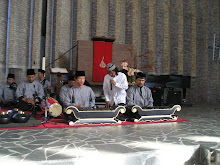
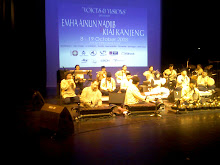

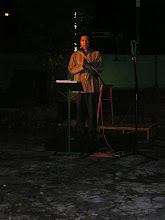



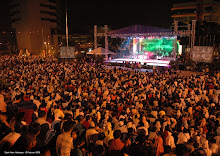
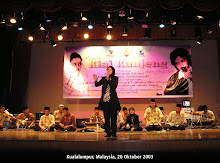
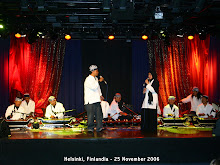.jpg)



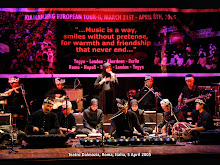


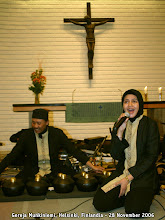.jpg)

.jpg)
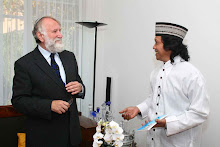
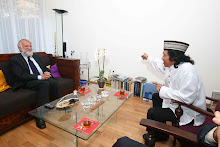
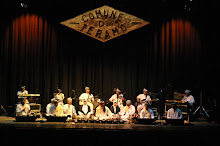


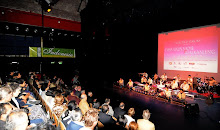

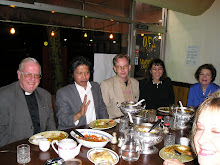


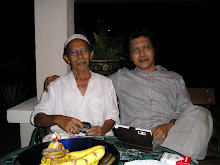
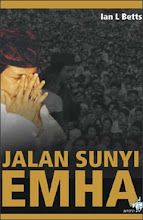
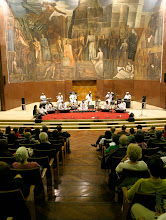
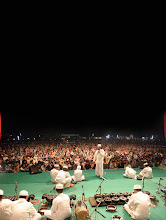

ReplyDeleteDünyanın en güzel ve en yeni sex videolarını 1080p porno formatında izleme şansını sunuyoruz